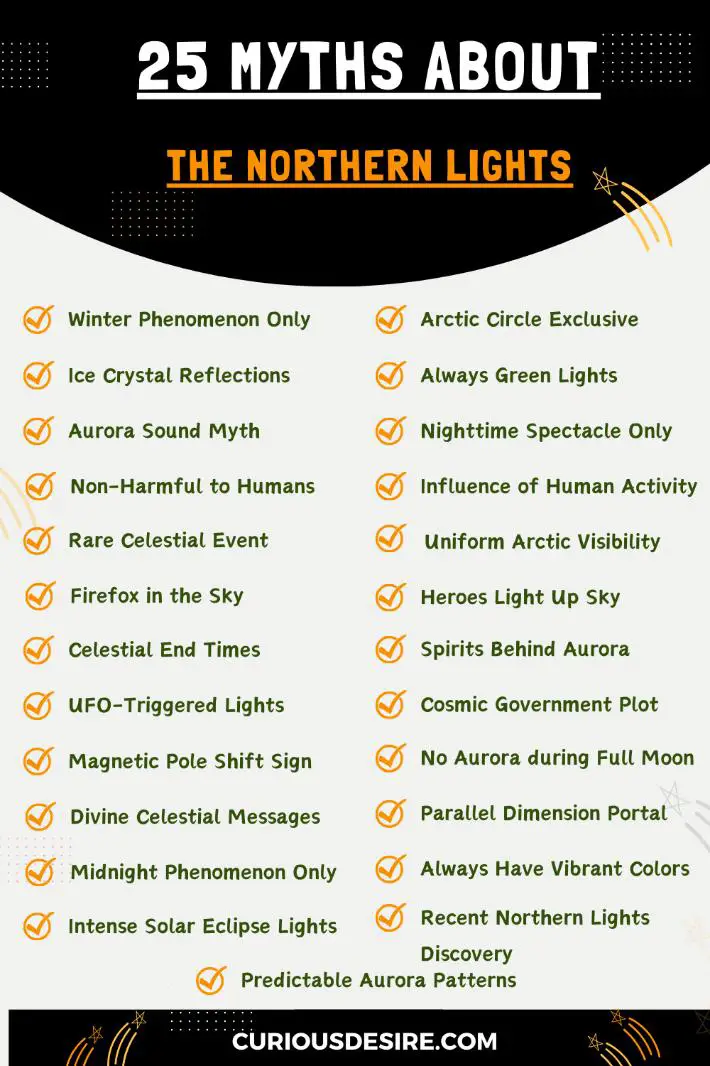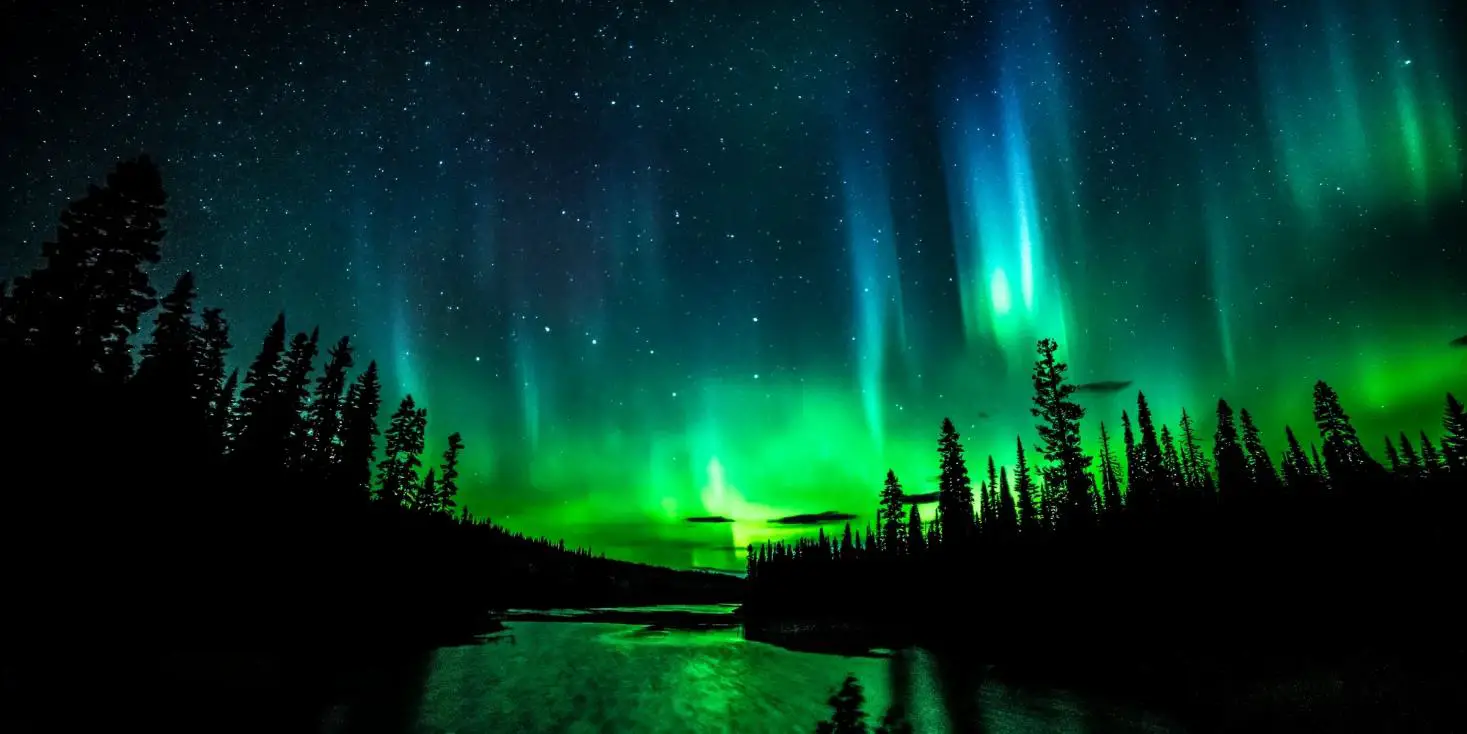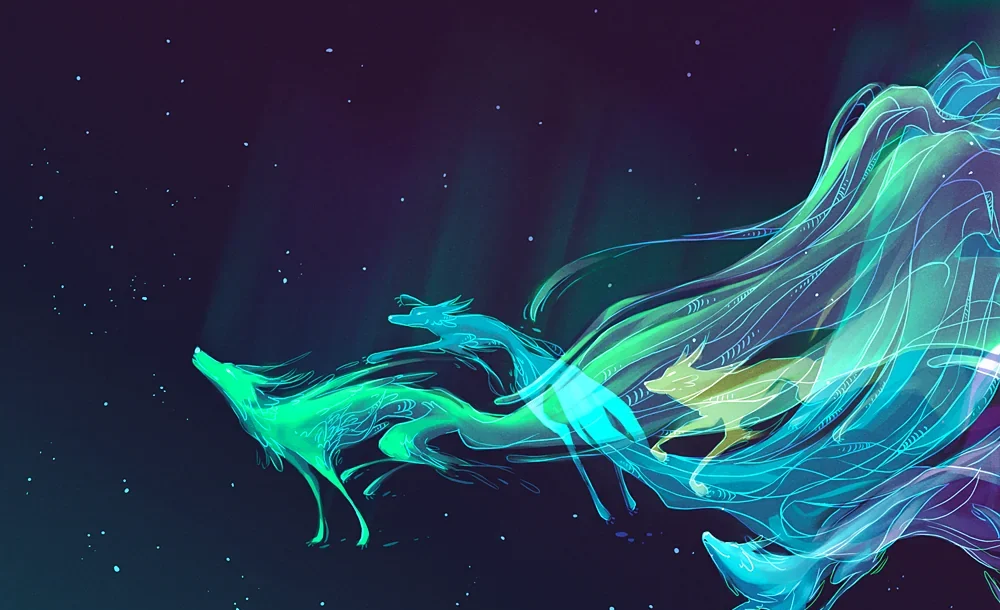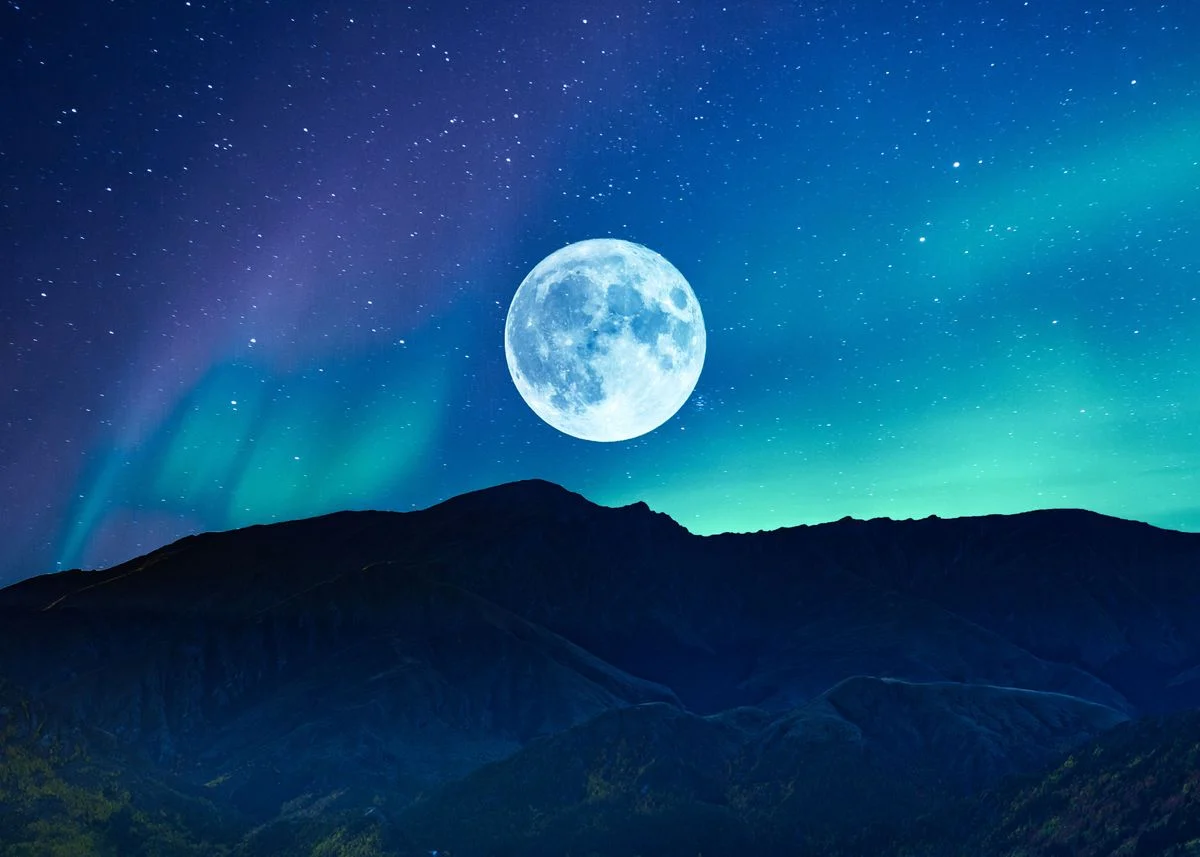For centuries, the Northern Lights, also known as the Aurora Borealis, have captivated the human imagination with their mesmerizing glow across polar skies.
This celestial display has given rise to an array of myths and misconceptions.
In this article, we’ll debunk these myths and provide scientific explanations to uncover the true wonders of this phenomenon.
5 Most Common Myths about the Northern Lights:
- Northern Lights Caused by Ghosts or Spirits
- UFO Activity Causing Northern Lights
- Government Conspiracy
- Sign of an Impending Magnetic Pole Shift
- Celestial Messages From the Gods
[toc]

Northern Lights Myths FAQs
1. What is the myth behind the Northern Lights?
The Northern Lights, or Aurora Borealis, have been the subject of various myths across different cultures. In Norse mythology, it was believed that the lights were a bridge to the sky built by the gods.
The Inuit people thought the lights were the spirits of the dead playing a game with a walrus skull.
2. What is the superstition about the Northern Lights?
In some cultures, the Northern Lights were considered a sign of good fortune or a harbinger of important events. Conversely, others saw them as an omen of war or a signal of impending danger.
3. What is the mystery of the Northern Lights?
The scientific explanation for the Northern Lights involves charged particles from the sun colliding with Earth’s magnetic field, creating a stunning display of light.
However, the allure and mystery lie in the ethereal beauty and the spiritual interpretations that various cultures have assigned to this natural phenomenon.
4. What is the Japanese myth about the Northern Lights?
While Japan doesn’t have a native myth specifically about the Northern Lights, some Japanese folklore associates unusual celestial phenomena with the activities of divine beings or spirits.
The Northern Lights might be considered a celestial display with mystical significance.
5. What are 5 different myths about the aurora borealis?
- Norse Mythology: The Northern Lights were seen as a bridge to the gods.
- Inuit Mythology: The lights were thought to be the spirits of the dead playing with a walrus skull.
- Finnish Mythology: The Northern Lights were believed to be caused by a magical fox running across the snow, creating sparks.
- Algonquin Mythology: The lights were considered a fire lit by Nanahboozhoo, a spirit in the form of a hare.
- Siberian Indigenous Peoples: The lights were believed to be the spirits of the unborn.
6. What are 3 interesting facts about the Northern Lights?
- The colors of the Northern Lights are determined by the type of gas particles colliding with charged particles in the Earth’s atmosphere.
- The Southern Hemisphere has a similar phenomenon known as the Aurora Australis.
- The Northern Lights are best seen in areas near the magnetic poles, such as Scandinavia and parts of Canada.
7. Why do the Japanese like the Northern Lights?
The Northern Lights are often associated with a sense of wonder, beauty, and the mystical. Japanese individuals may appreciate the Northern Lights for these qualities, finding inspiration and awe in the natural spectacle.
8. Does Japan see the Northern Lights?
While the Northern Lights are typically visible in polar regions, including Scandinavia and Canada, they are rarely seen in Japan.
However, during periods of increased solar activity, the auroras can occasionally be visible at higher latitudes, including in northern parts of Japan.
9. Why shouldn’t you take pictures of the Northern Lights?
Capturing the Northern Lights in photographs can be challenging due to the low light conditions and the lights’ dynamic nature.
Additionally, constantly taking pictures may distract from fully experiencing the beauty of the phenomenon at the moment.
Some suggest taking a moment to appreciate the lights with the naked eye before trying to capture them on camera.


